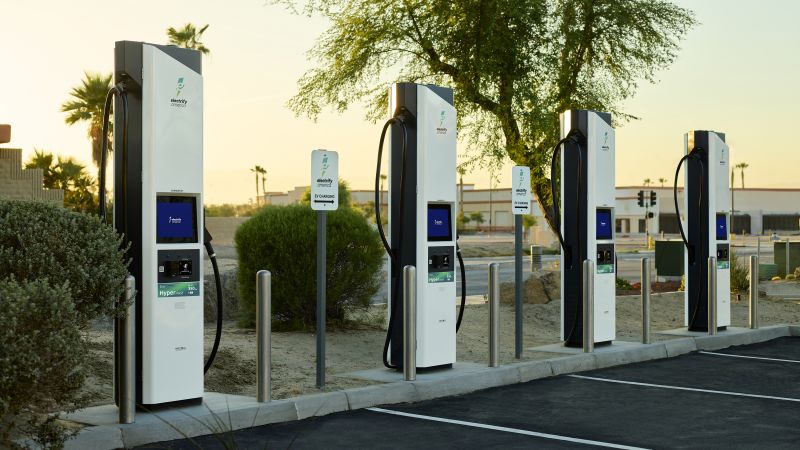A CNN reporter spent more than two hours waiting for EV chargers — thanks to “ill-mannered charger hogs who don’t respect EV etiquette.”
[T]o protect batteries from damage, charging speeds slow way down once batteries get beyond 80% full. In fact, it can take as long, or even longer, to go from 80% charged to completely full than to reach 80%. Meanwhile, lines of electric vehicles wait behind almost-full cars. I was waiting behind people with batteries that were 92%, 94% and even 97% full, as I could see on the charger screens. Still, they stayed there. I made my own situation worse by giving up on one location and going to another with more chargers, but there were even more EVs waiting there.
Given that a lack of public charging is turning many consumers off to EVs, according to multiple surveys, this is a major issue. Both Electrify America and EVgo said they are rapidly expanding their networks to, as EVgo’s Rafalson put it, “skate ahead of the puck,” trying to make sure there are enough chargers to meet future demand… “I think what you’re seeing is demand for public fast charging is really skyrocketing,” said Sara Rafalson, executive vice president for policy at EV charging company EVgo, “and I would say we’ve been really at an inflection point in the last year, year and a half, with demand…”
Electrify America, one of America’s biggest charging companies, is experimenting with a solution to the problem of charger hogs who can make it slow and unpleasant to travel in an EV. At 10 of the busiest EV fast charging stations in California, Electrify America has enacted a strict limit. Once a car’s batteries are 85% charged, charging will automatically stop and the driver will be told to unplug and leave or face additional 40-cent-per-minute “idle time” fees for taking the space. It’s similar to something Tesla vehicles do automatically. When a Tesla car, truck or SUV plugs into a particularly heavily-used Supercharger station, the vehicle itself may automatically limit charging to just 80% “to reduce congestion,” according to Tesla’s on-line Supercharger Support web page.
In that case, though, the user can still override the limit using the vehicle’s touchscreen. There will be no getting around Electrify America’s limit.
Electrify America’s president points out an EV driver could need a full charge (if they’re travelling somewhere with fewer charges) — or if they’re driving an EV with a relatively short range. So the article notse that some EV charging companies "have experimented with plans that charge different amounts of money at different times to give drivers incentives to fill their batteries at less busy hours…
“For the time being, let’s just hope that EV drivers who don’t really need to fill all the way up will learn to be more considerate.”



Public EVS should only charge to 80%.
Simple solution, the same as hybrids you simply are just unable to charge to 100%. I feel like this is just a design problem for uneducated users, who misunderstand a cell phone and fell that 100% is the only way to charge a device.
Education around the 20 to 80% guide is what I would consider a moment of “ah ha”.
My replacement hybrid battery came with some education.
Rescale it so the old 80% says 100% and the old 100% reads 120%
I believe this is how the Volt’s battery pack works.
Yeah, agree. Though if someone does needs to charge completely, the facilities could have slow, level 1 chargers off to the side or something. Shouldn’t make much/any difference since the controller slows the rate after 80-ish percent, anyway.
And yeah, my hybrid’s manual said the same, though I think it’s capacity range is like 30 (“empty”) to 80% (“full”).
It only has half the capacity advertised?!